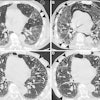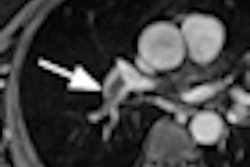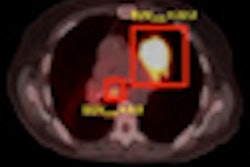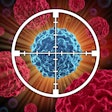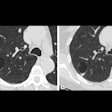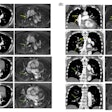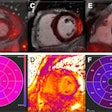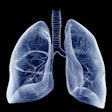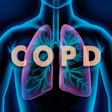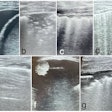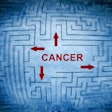Dear AuntMinnie Member,
A new study published today in Radiology is bolstering the argument for CT lung screening by determining that cancers detected on screening scans are very similar to the ones diagnosed outside of the screening setting.
CT lung screening has received renewed interest following the publication of results in 2010 indicating that screening could reduce mortality by more than 20% in a population of current and former smokers. But one argument being used against the implementation of broad-based CT screening is that it might detect slow-growing cancers that might never pose a threat to individuals; working up these cancers would be expensive and could cause patient morbidity, the argument goes.
Today's results may allay those concerns, according to an article in our CT Digital Community. In the study, a group led by Dr. Claudia Henschke analyzed the characteristics and progression of screen-detected cancers and compared them to lesions found under normal clinical conditions. The result: there wasn't much difference between the two.
Learn more -- and read comments on the study by Dr. Henschke -- by clicking here, or visit the CT Digital Community at ct.auntminnie.com.
Reports from ACC and SIR
New research on CT technology also figured prominently at the just-concluded American College of Cardiology (ACC) meeting in Chicago. Making waves was a study by researchers from Pennsylvania that added further support to the use of coronary CT angiography (CCTA) to triage patients presenting to the emergency room with chest pain that could be caused by heart disease.
Researchers in the American College of Imaging Network (ACRIN) PA 4005 study followed outcomes of patients who were discharged from the ER following a negative CCTA scan. They found no major adverse events in the 30-day period after patients were discharged, and an overall event rate of less than 1% after a month. Read more by clicking here.
In another ACC study, researchers presented a pair of studies that found that patients who see the buildup of calcium in their coronary arteries on CT scans are more likely to comply with treatment recommendations from their physicians, such as by taking statins and losing weight. That article can be found by clicking here.
The other major clinical conference going on this week is the Society of Interventional Radiology in San Francisco, where we've got reporters on the scene covering the proceedings. In a Monday presentation, several speakers discussed how vital the interventional radiology service is to the overall health of a hospital enterprise, and what interventional radiologists should do to make sure their department is indispensable. Learn more by clicking here.
We finish today's newsletter by circling back around to CT lung screening in a presentation by researchers from Northwestern University, who found in a pair of studies how to reduce radiation dose for CT-guided lung biopsies by adjusting scanning parameters. The technique could reduce radiation dose by two-thirds for such biopsies, making CT lung screening even more palatable. Get the rest of the story by clicking here.
